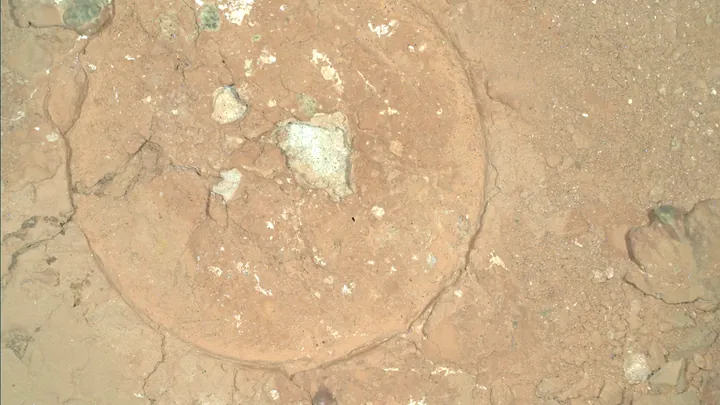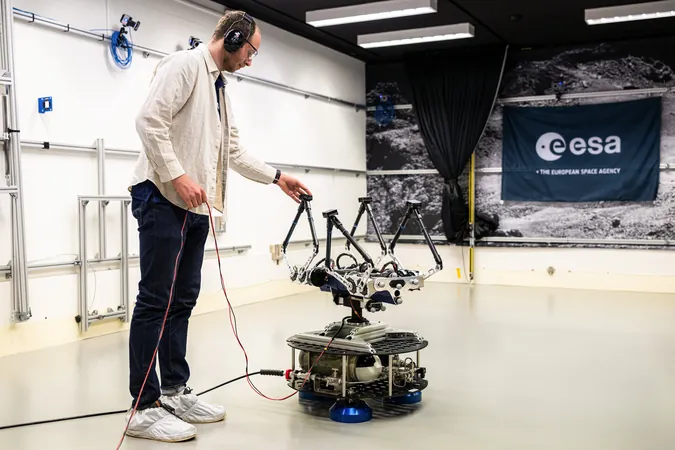
NASA's Perseverance Rover Discovers Mysterious Green Spots on Mars - What Could They Mean?
2024-10-30
Author: Wei Ling
NASA's Perseverance rover is nearing the four-year mark in its groundbreaking mission on Mars, tirelessly exploring ancient terrains and gathering valuable samples in search of evidence that our neighboring planet may have harbored microbial life in its distant past.
In a recent and stunning development, Perseverance captured a nighttime mosaic image of the Malgosa Crest abrasion patch at a location nicknamed "Serpentine Rapids." Utilizing its advanced SHERLOC WATSON camera, the rover unveiled an intriguing mix of white, black, and notably greenish spots embedded within Martian rock formations. This unexpected discovery has sparked enthusiasm among scientists, raising intriguing questions about what other hidden secrets might lie beneath the Martian surface.
To obtain these revealing images, Perseverance created a small abrasion patch in a rock outcrop named "Wallace Butte." This patch measures about five centimeters (approximately two inches) in diameter, with a prominent green spot visible in the upper left corner of the image, measuring around two millimeters (0.08 inches). The image was captured on August 19, during the 1,243rd Martian day of the Mars 2020 mission.
On Earth, the color variations seen in similar red Martian rocks are often attributed to oxidized iron – the same iron that gives our blood its red hue and causes the rust on our vehicles. Interestingly, these greenish spots are not entirely unusual in red rocks on Earth, where they form through a fascinating process: when liquid water interacts with sediment and then hardens into rock. This interaction incites a chemical transformation where oxidized iron shifts to its reduced state, ultimately creating the green coloration observed in the rocks.
The possibility of microbial activity contributing to these color changes exists on Earth; decaying organic matter can also create conducive conditions for this reduction process. Additionally, chemical reactions involving sulfur and iron can facilitate similar transformations without the influence of living microorganisms.
However, the nature of the processes responsible for the green spots discovered by Perseverance remains a mystery. Unfortunately, there was insufficient space for the rover to maneuver its SHERLOC and PIXL instruments directly over these intriguing green spots for more detailed analysis, leaving the scientists eager for future opportunities. The Perseverance team remains hopeful that subsequent findings will shed more light on the chemical reactions leading to these enigmatic features.
As this mission advances, each discovery could bring us closer to understanding not only Mars' geological history but also the potential for life beyond our Earth. Keep watching the skies, because who knows what incredible revelations are just around the corner!






 Brasil (PT)
Brasil (PT)
 Canada (EN)
Canada (EN)
 Chile (ES)
Chile (ES)
 Česko (CS)
Česko (CS)
 대한민국 (KO)
대한민국 (KO)
 España (ES)
España (ES)
 France (FR)
France (FR)
 Hong Kong (EN)
Hong Kong (EN)
 Italia (IT)
Italia (IT)
 日本 (JA)
日本 (JA)
 Magyarország (HU)
Magyarország (HU)
 Norge (NO)
Norge (NO)
 Polska (PL)
Polska (PL)
 Schweiz (DE)
Schweiz (DE)
 Singapore (EN)
Singapore (EN)
 Sverige (SV)
Sverige (SV)
 Suomi (FI)
Suomi (FI)
 Türkiye (TR)
Türkiye (TR)
 الإمارات العربية المتحدة (AR)
الإمارات العربية المتحدة (AR)